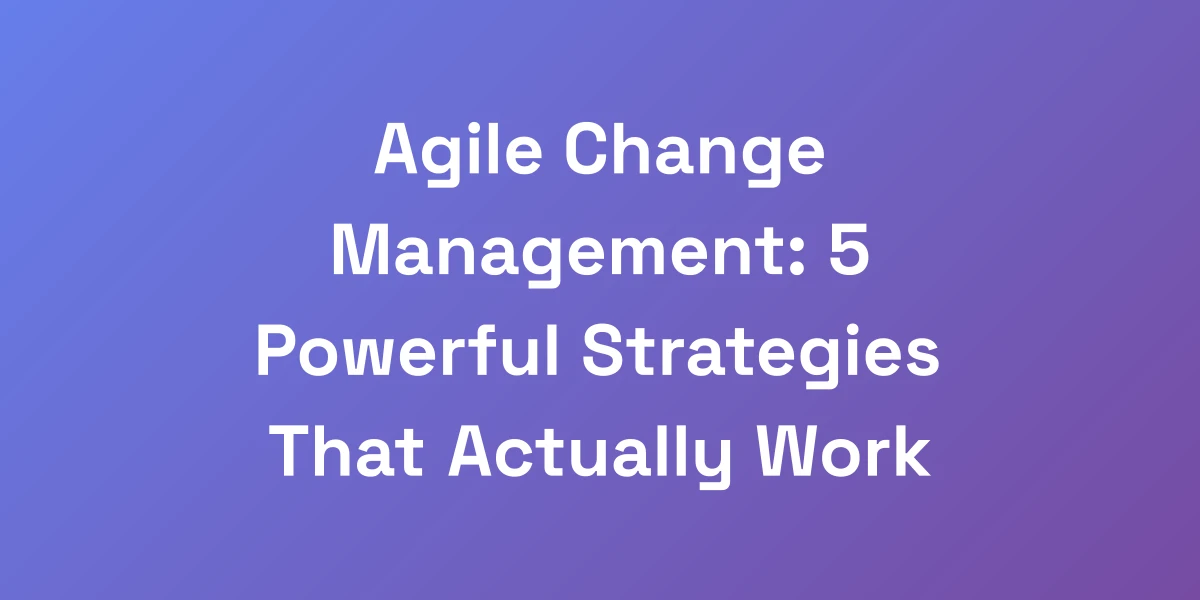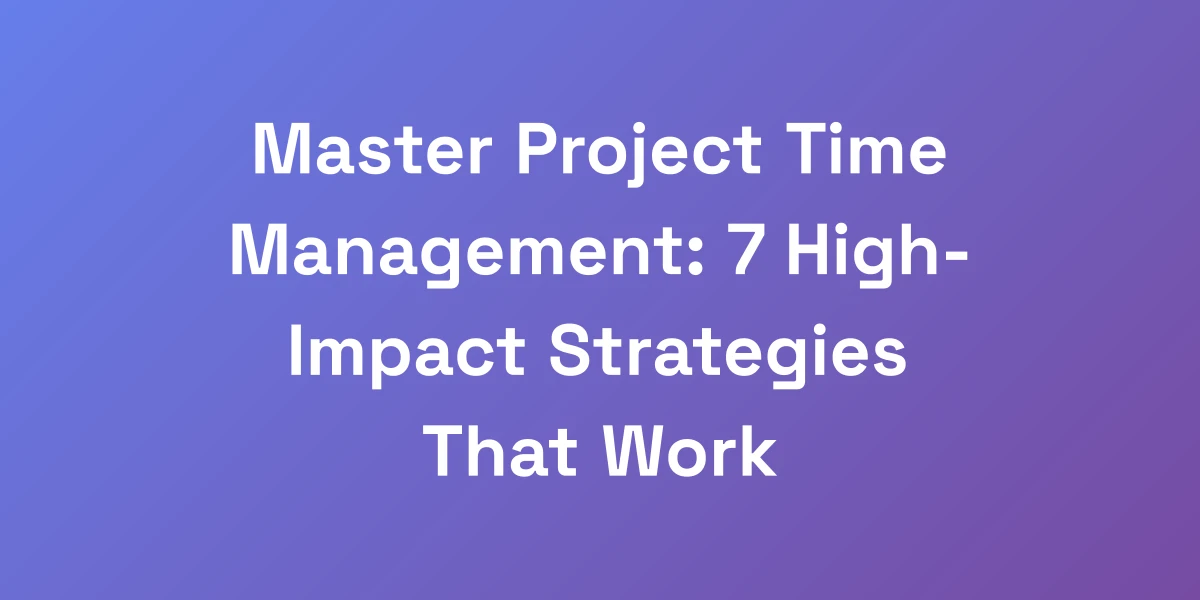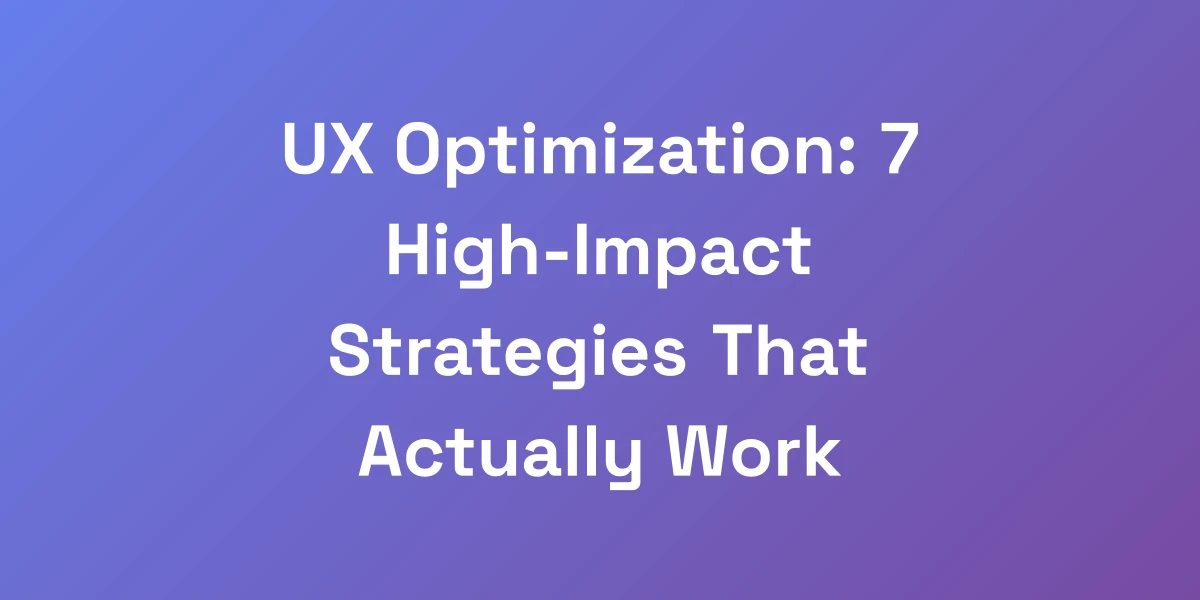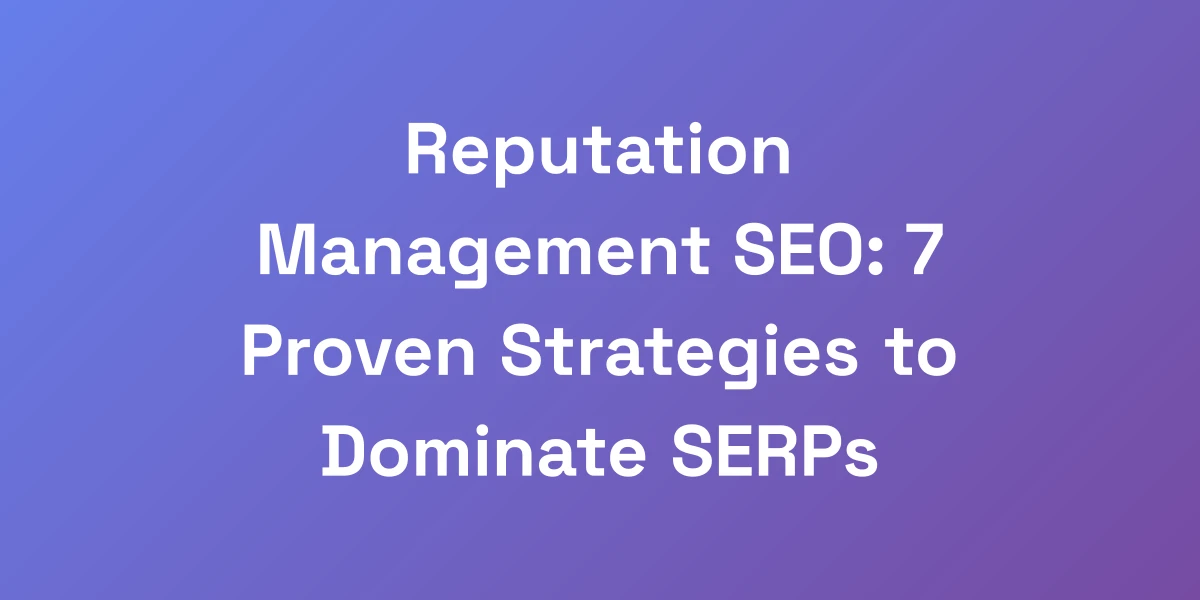
Modern Traffic Management: 7 Strategies That Cut Congestion by 63%
Mar 16, 2025 | By [email protected]
Modern Traffic Management: 7 Strategies That Cut Congestion by 63%
Ever felt stuck in traffic so bad you wondered if your car’s going to float? We’ve all been there. Traffic congestion isn’t just a nuisance—it’s a massive drain on our economy and our sanity. Did you know that in 2024 alone, U.S. drivers lost an average of 43 hours to traffic snarls, costing around $74 billion in lost productivity? That’s not just a number; it’s a wake-up call.
Traditional traffic management methods, like adding more lanes or tweaking signal timings, are failing us. They’re like trying to fix a sinking ship with duct tape. But what if there were smarter, more effective strategies that could dramatically reduce congestion? Buckle up, because we’re diving deep into seven game-changing traffic management strategies that have been proven to cut congestion by up to 63%. These aren’t just theories—they’re real-world solutions that have transformed cities from gridlocked nightmares into smoothly flowing arteries.
The Hidden Cost of Traffic Chaos (And Why Traditional Methods Fail)
Let’s face it: traffic chaos is costing more than just time. It’s bleeding our cities dry with billions lost in productivity each year. Traditional methods like adding lanes or adjusting signal timings are antiquated solutions that barely scratch the surface of the problem.
The Real Economic Impact of Traffic Congestion
Think about it: every hour you spend in traffic is an hour not spent productively. In 2024, U.S. drivers lost over four billion hours to congestion. That’s $74 billion evaporating annually. Major cities like New York saw drivers lose up to 101 hours each, translating to a staggering $9.1 billion loss. These numbers aren’t just statistics—they represent lost opportunities, decreased quality of life, and a significant drag on the economy.
Why Traditional Traffic Solutions Keep Failing
Adding more lanes might seem like an obvious fix, but it often leads to induced demand—more lanes lead to more cars, which means the same congestion problems persist.
- Short-Term Relief: Temporary ease in traffic flow without addressing underlying issues.
- Long-Term Problems: Increased vehicle ownership and usage negate initial benefits.
- Environmental Impact: More cars mean more emissions, worsening air quality.
Signal timing tweaks are another outdated approach. They might yield minor improvements, but they lack the adaptability needed for today’s dynamic traffic patterns.
The Evolution of Smart Traffic Management
Enter smart traffic management—a revolution that leverages technology to create adaptive, efficient traffic systems. By integrating real-time data and advanced analytics, smart systems can respond to traffic conditions swiftly and effectively, paving the way for smoother traffic flow and reduced congestion.
Key Performance Indicators in Modern Traffic Systems
Measuring success in modern traffic management goes beyond counting cars. Key performance indicators (KPIs) include:
- Average Travel Time: Reducing the time drivers spend on the road.
- Traffic Flow Efficiency: Maximizing the movement of vehicles through intersections.
- Accident Rates: Lowering the number of traffic-related accidents.
- Emission Levels: Decreasing environmental impact by reducing idling and stop-and-go traffic.
The Role of Data Analytics in Understanding Traffic Patterns
Data is the backbone of modern traffic management. By analyzing traffic flow data, patterns emerge that can inform intelligent traffic management systems. For instance, identifying peak congestion times allows for dynamic adjustments in traffic signals, ensuring smoother flow during the busiest hours.
Real-Time Adaptive Traffic Control Systems: The Game Changer
Imagine a city where traffic lights communicate with each other, adjusting in real-time to ensure the smoothest flow possible. Sounds futuristic? It’s already happening. 90% of traffic lights in America are still running on outdated technology, but cities embracing real-time adaptive systems are turning the tide, cutting wait times by up to 43% during peak hours.
How AI-Powered Traffic Signals Work
AI-powered signals use machine learning algorithms to predict traffic patterns and adjust signal timings accordingly. These systems analyze data from various sources—cameras, sensors, and even social media—to make informed decisions that keep traffic moving.
- Data Collection: Continuous gathering of traffic data from multiple sources.
- Analysis: AI algorithms process the data to identify patterns and predict congestion points.
- Adjustment: Traffic signals adjust in real-time to optimize flow.
Implementation Success Stories from Major Cities
Cities like Los Angeles and Pittsburgh have seen remarkable improvements after implementing adaptive traffic systems. Los Angeles, notorious for its traffic jams, reported a 30% reduction in congestion after deploying AI-driven signals. Similarly, Pittsburgh achieved a 25% decrease in average travel times.
Cost-Benefit Analysis of Adaptive Systems
While the initial investment in AI-powered systems is significant, the long-term benefits far outweigh the costs.
- Initial Costs: Installation of sensors, cameras, and advanced signal systems.
- Operational Savings: Reduced fuel consumption and lower emissions.
- Economic Gains: Increased productivity from time saved on the road.
Overall, cities can expect a strong return on investment through improved traffic flow and economic gains.
Integration with Emergency Response Systems
Adaptive traffic systems aren’t just for everyday traffic. They integrate seamlessly with emergency response systems, ensuring that ambulances and fire trucks can navigate through traffic swiftly, saving precious lives during emergencies.
Future Developments in Smart Traffic Control
The future of smart traffic control lies in deeper AI integration and expanded data sources. AI comes to the rescue, predictive maintenance for traffic infrastructure, enhanced vehicle-to-infrastructure (V2I) communication, and greater reliance on IoT devices are on the horizon, promising even greater efficiencies and reductions in congestion.
Dynamic Lane Management: Maximizing Existing Infrastructure
Building new roads is expensive and time-consuming. What if we could make better use of the infrastructure we already have? Enter dynamic lane management—a strategy that transforms fixed-lane highways into shape-shifting traffic solutions, optimizing lane usage based on real-time traffic demands.
Reversible Lane Systems: Implementation Guide
Reversible lanes adjust the direction of traffic flow based on peak travel times. For example, during morning rush hours, more lanes can be dedicated to inbound traffic, and vice versa in the evening. This flexibility ensures that lane capacity matches demand, reducing bottlenecks and easing congestion.
- Planning: Assess traffic patterns to determine peak directions.
- Infrastructure: Install movable barriers and clear signage.
- Operation: Implement automated systems to switch lane directions based on traffic data.
Smart Signage and Driver Communication
Effective communication with drivers is crucial for dynamic lane management. Smart signage provides real-time updates on lane directions, traffic conditions, and travel times, helping drivers make informed decisions and reducing confusion.
- Real-Time Updates: Display current lane assignments and traffic conditions.
- Driver Guidance: Offer clear instructions to navigate changing lane configurations.
- Feedback Loop: Use driver feedback to continuously improve signage effectiveness.
Peak Hour Management Strategies
Managing traffic during peak hours requires strategic planning and flexible lane usage. By dynamically adjusting lane assignments, cities can ensure that traffic flow remains smooth even during the busiest times.
- Data-Driven Decisions: Use traffic data to identify peak periods and adjust lanes accordingly.
- Flexible Enforcement: Implement policies that allow for temporary lane changes based on real-time conditions.
- Public Awareness: Educate drivers about dynamic lane management practices to ensure compliance and cooperation.
Safety Considerations and Risk Mitigation
Dynamic lane management must prioritize safety. Proper implementation includes measures to prevent accidents during lane changes and ensure that all drivers are aware of the dynamic configurations.
- Clear Signage: Ensure all lane changes are clearly marked and communicated to drivers.
- Automated Enforcement: Use cameras and sensors to monitor lane usage and enforce rules.
- Public Education: Inform drivers about the system and how to safely navigate dynamic lanes.
ROI Analysis of Dynamic Lane Projects
Investing in dynamic lane management systems offers substantial returns by maximizing existing infrastructure. Cities can achieve up to 35% flow improvements during rush hours with minimal investment, making it a cost-effective solution compared to building new roads.
Connected Vehicle Technology: The Future Is Already Here
If you think connected vehicle technology is something out of a sci-fi movie, you’re already behind. Today, early adopters are seeing accident rates drop by 27% and traffic flow improve by 22%. This isn’t about waiting for some futuristic technology—it’s about implementing what’s available now to create smarter, safer roads.
Vehicle-to-Infrastructure Communication Systems
Vehicle-to-Infrastructure (V2I) communication allows vehicles to interact with traffic signals, road signs, and other infrastructure elements. This seamless communication enables real-time adjustments to traffic signals, improving flow and reducing congestion.
- Traffic Signal Coordination: Vehicles receive signal timing information, allowing them to adjust speed and reduce stops.
- Dynamic Routing: Vehicles can be rerouted in real-time based on traffic conditions.
- Safety Alerts: Immediate warnings about upcoming hazards or congestion points.
Data Security and Privacy Protocols
With increased connectivity comes the need for robust security measures. Ensuring the privacy and security of data exchanged between vehicles and infrastructure is paramount.
- Encryption: Protect data transmissions from unauthorized access.
- Authentication: Verify the identity of connected devices and vehicles.
- Data Governance: Implement policies to manage and protect collected data.
Implementation Phases and Timeline
Implementing connected vehicle technology requires a phased approach to ensure smooth integration and minimal disruption.
- Phase 1: Pilot Programs: Start with small-scale implementations in selected areas to test and refine the technology.
- Phase 2: Infrastructure Upgrades: Enhance existing infrastructure to support V2I communication.
- Phase 3: Full-Scale Deployment: Roll out the technology city-wide, ensuring all vehicles and infrastructure elements are connected.
Cost Structure and Funding Options
While the initial costs can be high, various funding options can help mitigate expenses.
- Government Grants: Seek federal and state funding specifically allocated for smart transportation projects.
- Public-Private Partnerships: Collaborate with private companies to share the financial burden.
- Long-Term Savings: Consider the long-term economic benefits from reduced congestion and accidents.
Success Metrics and Performance Monitoring
Measuring the success of connected vehicle technology involves tracking specific metrics that indicate improvement in traffic management and safety.
- Accident Reduction: Monitor changes in traffic-related accidents.
- Traffic Flow: Assess improvements in vehicle movement and reduced congestion.
- User Adoption: Evaluate the rate at which drivers and vehicles adopt the technology.
Predictive Analytics: The Secret Weapon of Traffic Management
Here’s something that changed everything for us: predictive analytics isn’t just about collecting data—it’s about turning that data into action. When you can predict traffic patterns with 94% accuracy, you’re not just reacting to problems—you’re preventing them before they happen. This is the difference between playing checkers and chess.
Building Predictive Traffic Models
Predictive traffic models use historical and real-time data to forecast future traffic conditions. By understanding patterns, we can anticipate congestion points and make proactive adjustments.
- Data Collection: Gather data from traffic sensors, GPS devices, and historical traffic records.
- Model Development: Use machine learning algorithms to identify patterns and predict future traffic scenarios.
- Validation: Continuously test and refine models for accuracy.
Real-Time Data Integration Methods
Integrating real-time data into traffic management systems is crucial for maintaining up-to-date predictions and adjustments.
- IoT Sensors: Deploy sensors throughout the city to collect real-time traffic data.
- Data Streams: Use data processing platforms to handle large volumes of incoming data.
- API Integration: Connect various data sources through APIs for seamless data flow.
Machine Learning Applications in Traffic
Machine learning enhances the ability of traffic management systems to predict and respond to traffic conditions.
- Pattern Recognition: Identify recurring traffic patterns and anomalies.
- Adaptive Learning: Continuously improve predictions by learning from new data.
- Decision Making: Automate traffic control decisions based on predictive insights.
Actionable Insights Generation
Turning data into actionable insights involves interpreting the predictions and implementing strategies to optimize traffic flow.
- Traffic Signal Adjustments: Modify signal timings based on predicted congestion.
- Route Optimization: Suggest alternative routes to drivers in real-time.
- Proactive Maintenance: Schedule maintenance during predicted low-traffic periods to minimize disruption.
Performance Measurement Framework
To ensure predictive analytics are effective, a robust performance measurement framework is essential.
- Key Metrics: Track metrics such as travel time, congestion levels, and accident rates.
- Continuous Monitoring: Regularly review performance data to identify areas for improvement.
- Feedback Loops: Use feedback from traffic managers and drivers to refine predictive models.
Conclusion
We’ve journeyed through seven transformative traffic management strategies that can slash congestion by an astonishing 63%. From real-time adaptive traffic control systems to the future-ready connected vehicle technology, these strategies aren’t just innovative—they’re essential for the cities of tomorrow.
So, what’s the next step? It’s time to move beyond outdated solutions and embrace these cutting-edge strategies. Reduce congestion, boost economic productivity, and create safer, greener cities. The tools and technologies are here—let’s use them to make our urban environments thrive.
Ready to transform your city’s traffic management? Start implementing these strategies today and witness the change. Have experiences with modern traffic management? Share your stories and let’s continue the conversation on building smarter, more efficient cities together.








